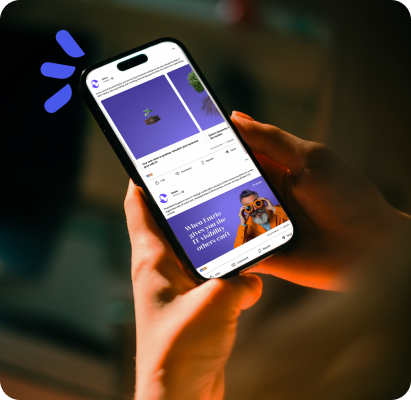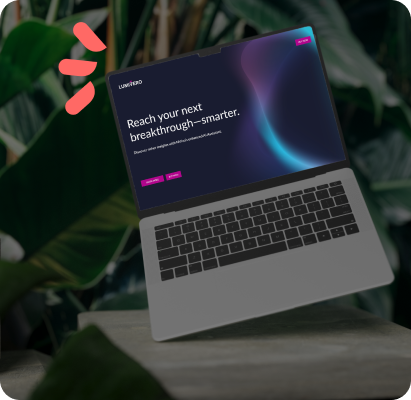
If you’re consistently publishing valuable content, you’re already ahead of the game. But are you getting the most out of every post?
A lot of brands are doing the hard part: creating content consistently and focusing on what their audience cares about. But small details—like optimizing title tags, using the right heading levels, or writing strong meta descriptions—often get overlooked in the rush to publish. And while writing for humans should always come first, it helps to understand how search engines interpret structure and context behind the scenes.
That’s where foundational SEO steps in—and no, you don’t need to be an expert. You don’t need to overhaul your entire site. And you won’t have to spend hours on technical cleanup. Most of these steps take just a few minutes—and when they become part of your content workflow, they’re nearly effortless.
Why foundational SEO still matters
You could write the best blog post in your industry, but if your audience can’t find it, it won’t drive results.
Foundational SEO makes your content discoverable. It helps Google and Bing—and your prospects—understand what your page is about. And it boosts your chances of showing up when people are actively searching for topics you care about.
Bonus: good SEO usually means a better user experience, too. Clear headlines, short URLs and logical structure all make your site easier to use, which keeps people around longer. That’s a win for your audience and your analytics.
And yes, SEO still matters in the AI era.
Tools like Google’s AI Overviews (part of Google’s Search Generative Experience, or SGE) are changing how results are displayed—and which content gets visibility. According to Semrush, AI Overviews were triggered in 13.14% of all search queries in March 2025, up from just 6.49% in January. Structured, well-optimized content is more likely to be cited in these results, giving you an edge in a shifting search landscape.
Foundational SEO ensures your content is not just readable by people, but machine‑friendly too. That’s how it gets discovered, cited by AI and clicked on—even as search evolves.
Your 10-step SEO checklist for better content visibility
You don’t need to overhaul your website or spend hours digging through keyword data to make SEO work for you. The real magic of SEO happens when you consistently apply small, strategic changes—especially when you’re creating new content. These are the foundational practices that help your site rank better, earn more clicks and build long-term visibility in search engines.
Whether you’re optimizing a blog post, a landing page or your homepage, this checklist will help you cover the SEO essentials that too often get skipped.
1. Set up your tools
Before you do any optimization, make sure you can track the impact of your work.
- Google Search Console shows you how your site performs in search and flags indexing issues.
- Google Analytics 4 helps you understand where traffic comes from and what users do on your site.
- Bing Webmaster Tools (optional) can reveal opportunities with smaller search engines.
- If you’re using WordPress, plugins like Yoast SEO or Rank Math make managing metadata and structure much easier.
Why it matters: If you can’t measure it, you can’t improve it. These tools help you spot issues, understand what’s working and identify new opportunities.
2. Use short, keyword-friendly URLs
A clear, focused URL gives Google and users a fast clue about your page’s topic.
- Keep URLs short and remove unnecessary filler words
- Include your main keyword in the slug
- Use hyphens instead of underscores
Why it matters: Clean, descriptive URLs improve indexing and make it easier for users to understand what they’re clicking, especially when your link gets shared.
3. Choose keywords that match your authority
Not all keywords are created equal. It’s better to rank on page one for a less competitive term than page five for a high-competition one.
- Use tools like Ahrefs, Semrush or Google Keyword Planner
- Prioritize keywords with achievable difficulty and strong search intent
Why it matters: Matching keyword difficulty to your domain authority helps you rank faster and earn more relevant traffic—without spinning your wheels.
4. Write a clear, compelling title tag
Your title tag appears in search results, browser tabs and link previews. It’s often your first—and only—chance to win a click.
- Include your primary keyword
- Aim for 50–60 characters
- Write it like a headline: specific, clear and enticing
Why it matters: Search engines weigh the title tag heavily, and users rely on it to decide whether to click. A good one boosts your visibility and click-through rate (CTR).
5. Organize your content with proper heading structure
Heading tags (H1–H6) break up your content and guide both readers and search engines.
- Use only one H1 (usually the title) per page
- Use H2s and H3s to organize sections logically
- Add keywords in headers when they fit naturally
Why it matters: Structured content is easier to scan, easier to crawl and more likely to rank. It also sets your content up for featured snippets and AI citations. Most importantly, having proper heading levels makes your website more accessible for people using screen readers.
6. Front-load your keywords
Search engines and users alike pay more attention to the beginning of your content.
- Use your primary keyword within the first 150 words
- Place it near the start of titles, subheads and sentences when you can
Why it matters: Google gives more weight to content at the top of the page, and front-loading your keyword helps signal relevance early on.
7. Use related keywords and long-tail variations
Long-tail keywords are more specific and often easier to rank for than broad terms.
- Use Google’s "related searches" or tools like SEMrush to find variations
- Incorporate keyword synonyms and natural phrasing throughout the content
Why it matters: This makes your content more helpful to users with nuanced queries and improves your chances of ranking for a variety of search terms—not just one.
8. Optimize your images
Images help tell your story, but search engines can’t “see” them unless you provide context.
- Rename image files with descriptive names (e.g., seo-checklist.png)
- Use alt text that describes the image and includes a keyword if appropriate. (Note: only describe images that are necessary to understanding the content. If the image is purely decorative, use “alt=” to let screen readers know to skip describing the image.)
Why it matters: Optimized images improve accessibility, contribute to SEO, and can help your content appear in Google Images and visual search tools.
9. Link with intention
Strategic internal and external linking helps search engines understand your site’s structure—and keeps users engaged.
- Add internal links to other relevant pages on your site
- Use external links to reference trusted sources (e.g., industry associations, research firms, major news outlets, government websites, .edu sources).
Why it matters: Internal links distribute authority across your site and improve navigation. External links build credibility and can boost your page’s relevance.
10. Write a meta description that earns clicks
Your meta description shows up below the title in search results.
- Keep it under 155 characters
- Include the focus keyword
- Summarize the benefit or insight of your content, without giving it all away
Why it matters: Meta descriptions don’t directly affect rankings, but they impact CTR. A well-written one can turn impressions into clicks.
Final thought: good SEO is good marketing
You don’t need to be a technical SEO pro to set your content up for success. These small tweaks—done consistently—can make a big impact on your search visibility and traffic over time.
The best part? You can start using them today. Next time you hit “publish,” come back to this list and see how many boxes you can check. Your future self (and your website analytics) will thank you.
Want help implementing these SEO best practices across your site? We’d love to chat.
Subscribe to our newsletter
Curated content, news articles, team updates and more.



